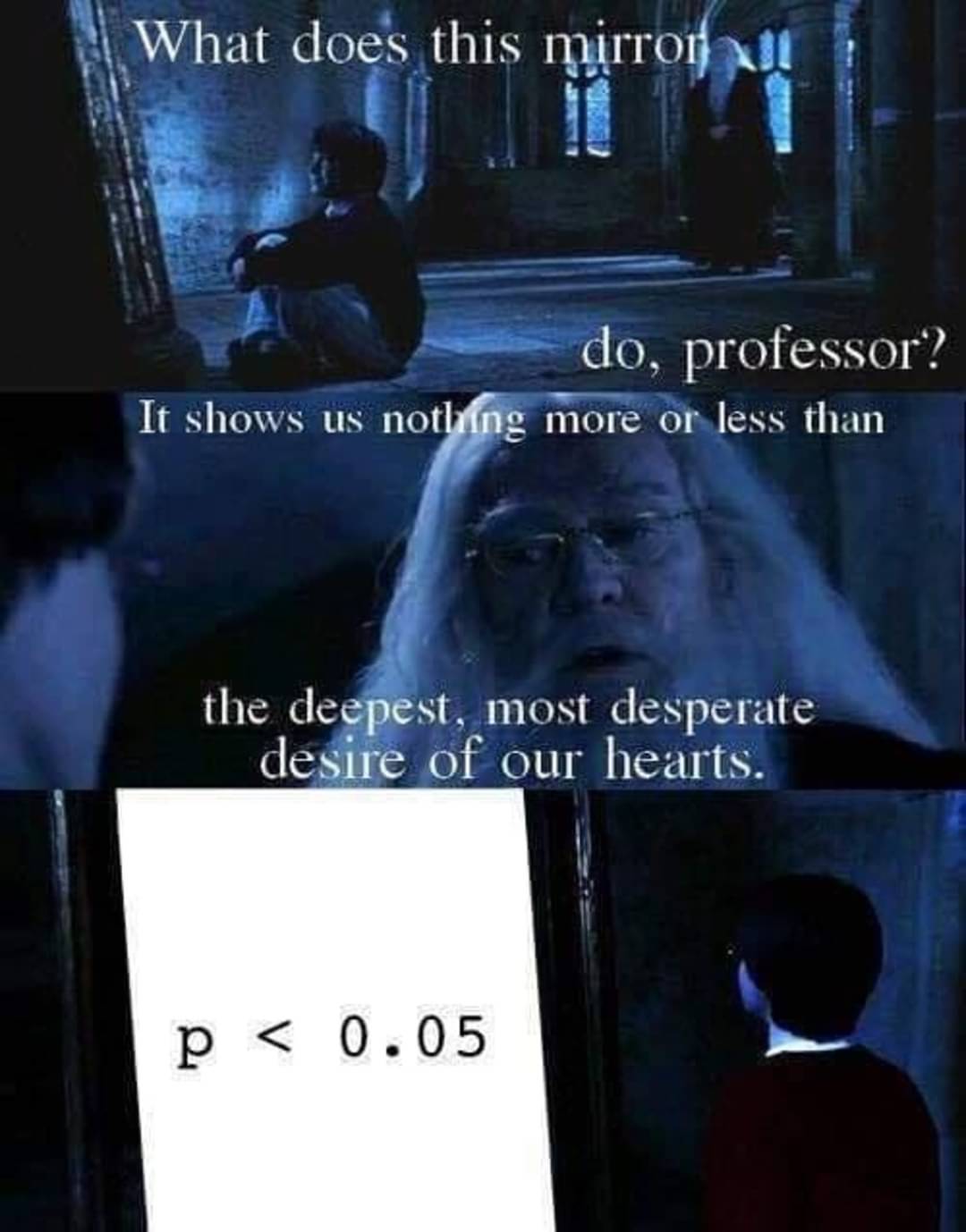221
you are viewing a single comment's thread
view the rest of the comments
view the rest of the comments
this post was submitted on 29 Aug 2024
221 points (100.0% liked)
Science Memes
10833 readers
1866 users here now
Welcome to c/science_memes @ Mander.xyz!
A place for majestic STEMLORD peacocking, as well as memes about the realities of working in a lab.

Rules
- Don't throw mud. Behave like an intellectual and remember the human.
- Keep it rooted (on topic).
- No spam.
- Infographics welcome, get schooled.
Research Committee
Other Mander Communities
Science and Research
Biology and Life Sciences
- !abiogenesis@mander.xyz
- !animal-behavior@mander.xyz
- !anthropology@mander.xyz
- !arachnology@mander.xyz
- !balconygardening@slrpnk.net
- !biodiversity@mander.xyz
- !biology@mander.xyz
- !biophysics@mander.xyz
- !botany@mander.xyz
- !ecology@mander.xyz
- !entomology@mander.xyz
- !fermentation@mander.xyz
- !herpetology@mander.xyz
- !houseplants@mander.xyz
- !medicine@mander.xyz
- !microscopy@mander.xyz
- !mycology@mander.xyz
- !nudibranchs@mander.xyz
- !nutrition@mander.xyz
- !palaeoecology@mander.xyz
- !palaeontology@mander.xyz
- !photosynthesis@mander.xyz
- !plantid@mander.xyz
- !plants@mander.xyz
- !reptiles and amphibians@mander.xyz
Physical Sciences
- !astronomy@mander.xyz
- !chemistry@mander.xyz
- !earthscience@mander.xyz
- !geography@mander.xyz
- !geospatial@mander.xyz
- !nuclear@mander.xyz
- !physics@mander.xyz
- !quantum-computing@mander.xyz
- !spectroscopy@mander.xyz
Humanities and Social Sciences
Practical and Applied Sciences
- !exercise-and sports-science@mander.xyz
- !gardening@mander.xyz
- !self sufficiency@mander.xyz
- !soilscience@slrpnk.net
- !terrariums@mander.xyz
- !timelapse@mander.xyz
Memes
Miscellaneous
founded 2 years ago
MODERATORS

What?
The "p value" is a number, calculated from a statistical test, that describes how likely you are to have found a particular set of observations if the null hypothesis were true.
P values are used in hypothesis testing to help decide whether to reject the null hypothesis. The smaller the *p *value, the more likely you are to reject the null hypothesis.
Adding onto this. p < 0.05 is the somewhat arbitrary standard that many journals have for being able to publish a result at all.
Is you do an experiment to see we whether X affects Y, and get a p = 0.05, you can say, "Either X affects Y, or it doesn't and an unlikely fluke event occurred during this experiment that had a 1 in 20 chance."
Usually, this kind of thing is publishable, but we've decided we don't want to read the paper if that number gets any higher than 1 in 20. No one wants to read the article on, "We failed to determine whether X has an effect on Y or not."
Which is sad because a lot of science is just ruling things out. We should still publish papers that say that if we do an experiment with too small of a sample, we get an inconclusive result, because that starts to put bounds on how strongly a thing gets affected, if an effect occurs at all.
Smol p.